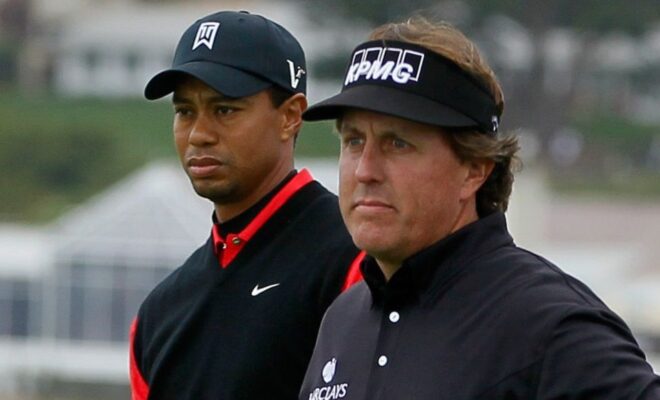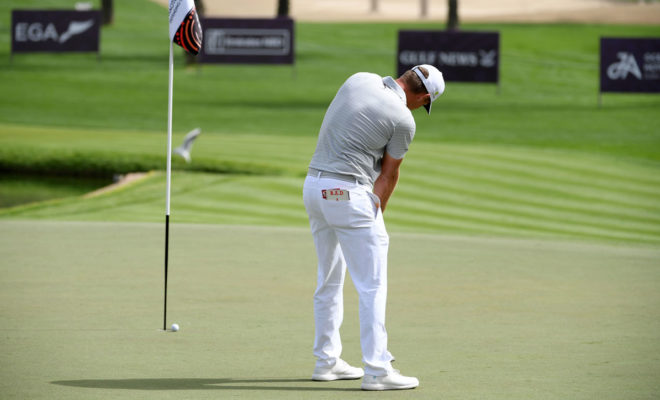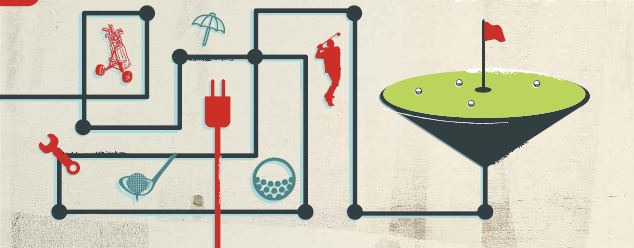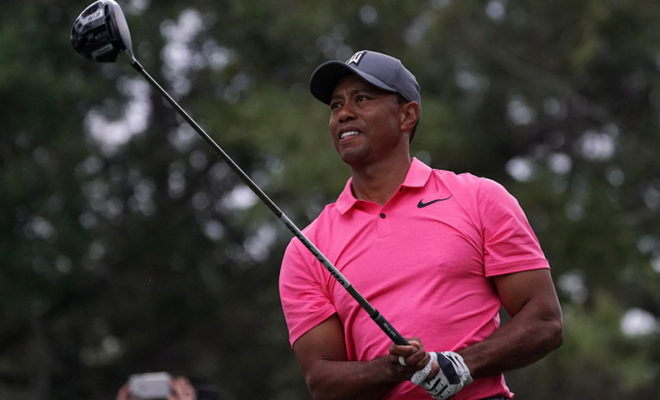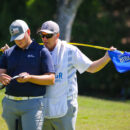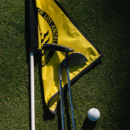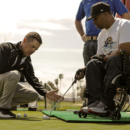Big Is Beautiful: How Much More Distance Can We Expect in a Driver?

Four hundred: That’s how far I should be hitting my drives. Take my baseline 230-yarder from 15 or so years ago, add the gain promised annually with every best, better, bestest-ever driver released, and I’m a long-drive contender. “There is nothing in golf like crushing a drive,” says Paul Bucy, director of the Palm Desert Golf Academy at Desert Willow GR. “It’s one of the reasons we play golf. Everyone loves to bomb a driver.”
Big is beautiful
And I’ve also won two Emmys, brokered peace in the U.S. House of Representatives and garnered a Noble Prize in chemistry.
Or perhaps none of that is true, save what Bucy said.
The Holy Grail
Distance is the Fountain of Youth, Excalibur and Seven Cities of Cibola of golf wadded together. It is mythical. We lust for it. Few are the players who regale friend and family with tales of a double-breaking curler dropping in from across the green. But let the planets align just once and a hacker tags it 250 … and the playback tape rolls on without stop.
And talk of distance fuels the industry: in advertising; on the range, where most of us ignore wedges to 100, 112 and 124, precisely; in devotion to pounding driver; and in the game as played by the best practitioners on the planet, who we tune in to most every Sunday afternoon. Distance is good because ours is a downrange sport to a target that can seem very far away.
The thing is, we might’ve tapped out that well.
“There has been a huge change in equipment from 20 years ago, but I don’t know how equipment is going to change that much going forward,” Bucy explains. “We found a way to move weights around to help people who have biases in their ball flight. There is an array of shafts that help people with how they load and unload [the shaft] and with delivery of the clubface to the ball. Weight is down, and we have huge composite heads. And I don’t think the ball can go much farther with how good it is now, and with the regulatory standards.”
As Cobra Golf Vice President, Research & Development Tom Olsavsky advises, the advances to be gained by new gear and proper fitting are most typically inversely proportional to ability: It is lesser-skilled golfers who likely have older, ill-fitting sticks and who, had they once been fitted, might not have gone back for a tune-up in years. We change, our swings change, our gear changes — grooves wear out, loft and lie get out of whack — and, yes, technology over time has wrought gains, but we can’t take advantage of a better stick if we don’t find one that works with our physique and swings.
“We in the industry always talk about fitting because that is the way we can get to an individual and give him or her what’s needed,” Olsavsky says. “It all comes down to what you have in the bag and should have in the bag. The funny thing is it’s the higher handicapper who can see the biggest differences with new gear and a fitting. Golfers can improve, and we are trying to build equipment that delivers more distance and more accuracy, that delivers improvement.”
End of the Road?
Perhaps a more germane inquiry is where that road has taken us.
When it comes to distance, elite and other capable high-swing-speed players have an interstate all their own and the on-ramp is closed to us by dint of basic physics. Data provided by the USGA shows that the average amateur in 2019 picked up only six yards over their 2000 self. (Ten yards were gained between 1996 and 2000, a period that saw an explosion in driver-head size — 250cc to 300 to 350 — and, at the end, the introduction of the modern golf ball, courtesy of the Pro V1.) Half a club in nearly 20 years? Where’s the revolution?
Before reading the riot act to the salesperson at the shop and swearing fealty to bowling, chill. Better is the true way of golf, and while distance is a big part of that, so is accuracy, acumen and a deft touch. A big(ger) drive gets us close(r) to the hole with a short(er) club for our approach, but we play our foul balls, and while a 140-yard shot from the rough to a tucked pin might be in the wheelhouse of Nelly and Xander, the rest of us would be better off easing off on the gas and going in from 160 from the fairway.
Distance gains aren’t a thing of the past, as more can be had. And it’s just not a credit card away — it never really has been — and certainly not if you pulled out that card just a model cycle or three ago. It’s also not to be found in 30- yard chunks with each equipment tweak.
For instance, improved aerodynamics and continued shaft advancements — ever lighter but able to withstand the forces imparted by a swing, thereby maintaining accuracy and optimal launch conditions — can yield more swing speed, which can yield more ball speed, which leads to more firepower. Improved in-club diagnostic sensors could help players more readily identify swing flaws and work on cures. A longer shaft can produce more swing speed. Or it might not, since players often tap the brakes with a longer stick because they lose a sense of where the club “is” in their swing. It’s all about ball speed, anyway, which is swing speed and centeredness of contact — in other words, hitting it on the screws.
“I’m asked this question a lot more now than I was 10 years ago,” Bucy explains. “How do I increase my clubhead speed?” There are a lot of golfers who have moderate clubhead speed and who can find the center of the clubface, yet when we work with a bunch of different drivers, we don’t see a lot of gains because all these drivers are all really good at this point. If there is a bad driver out there, it’s not going to sell. To say one is longer can’t be done because of the [USGA] regulations and the build-quality of all these manufacturers.”
Longer for a particular swing or person? Yes. But in the abstract, not demonstrably longer versus its peers in the market. Or last year’s version.
Still, for most of us, if we have newer gear, and it fits us, we can find meaningfully greater distance, but in doing so something will be asked of us: Golfer, improve thyself. Lessons and practice are good. We also need to stretch, work on strength and balance, and take up yoga or Pilates, as Bucy ardently advises. If we move the club faster and hit the sweet spot more consistently, we will add distance and accuracy. To borrow an album title from Steely Dan, you can’t buy a thrill. Oh, and move up at least one set of tees. Most players’ distance “problem” is an ego problem.
In other words, it takes work.
That’s the short and long of it, and it’s always been that way, whether done by baby steps or huge leaps.


